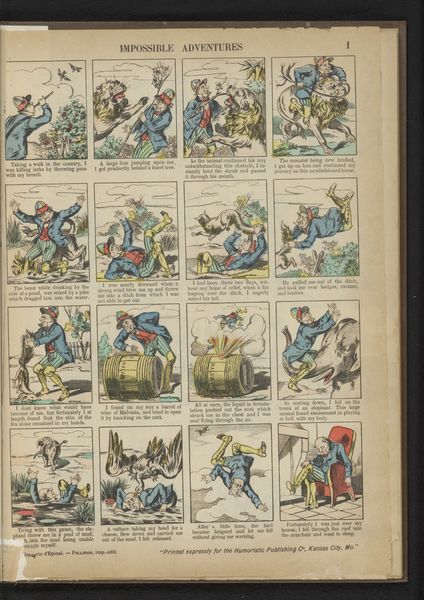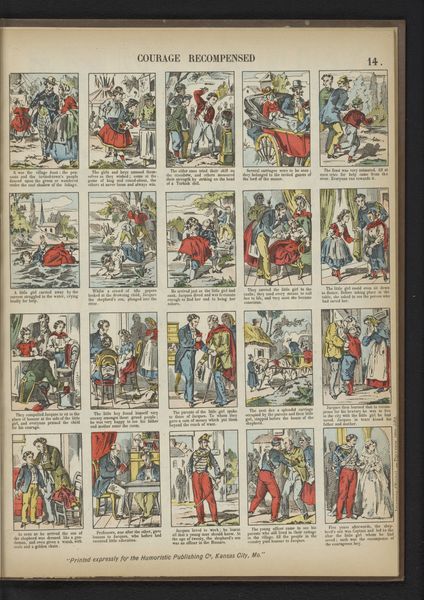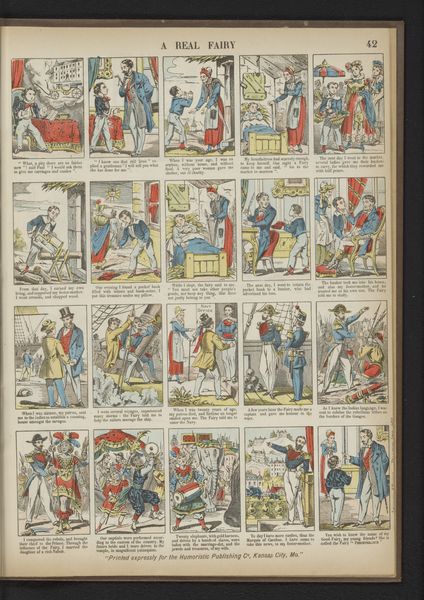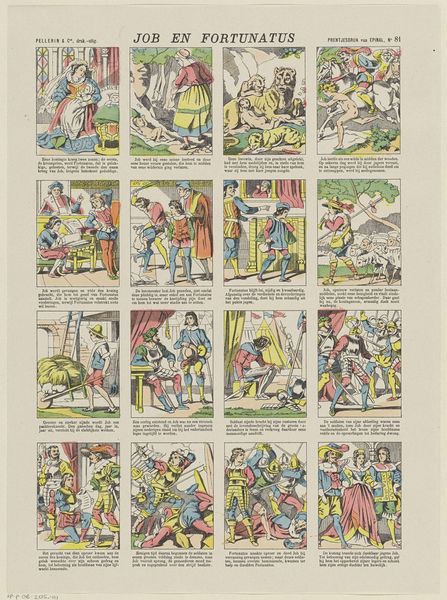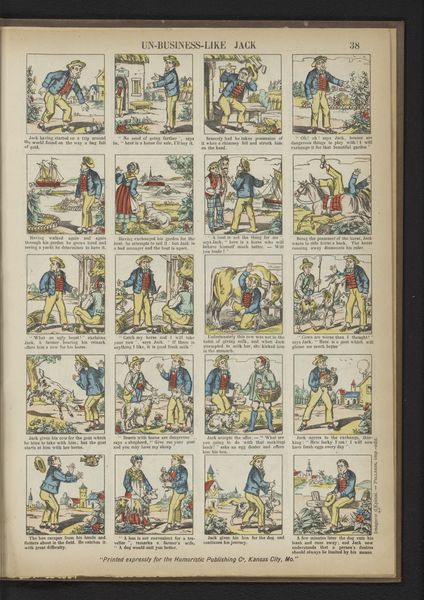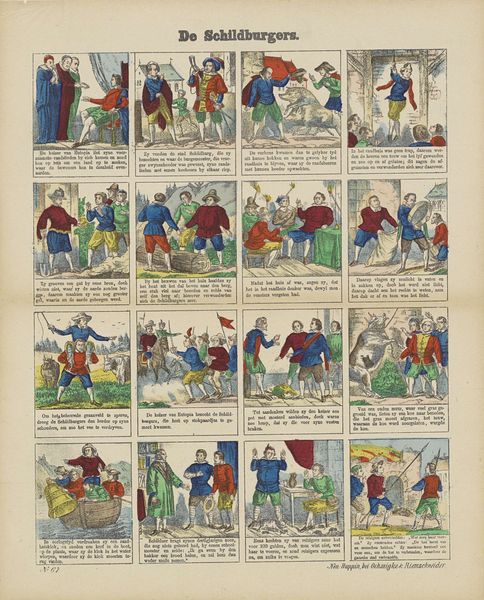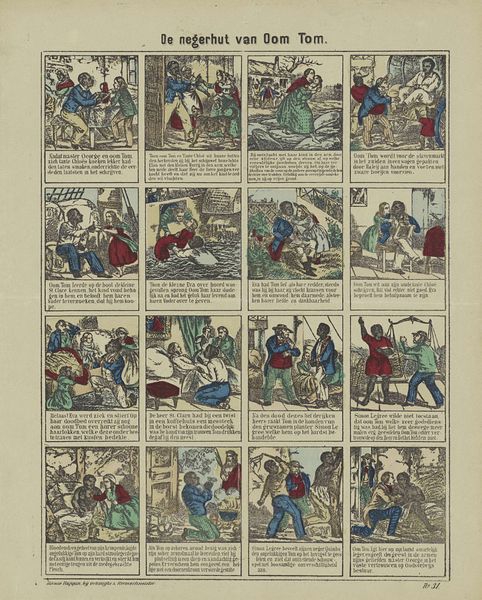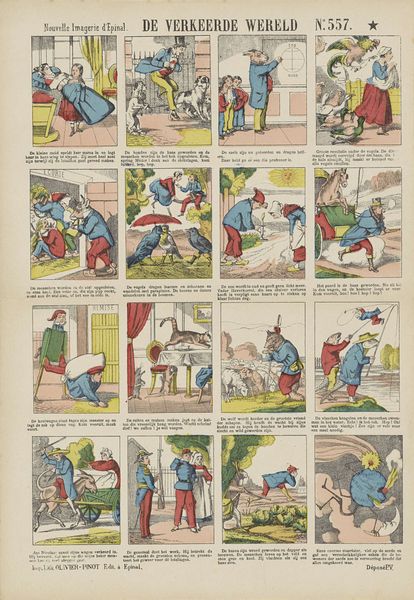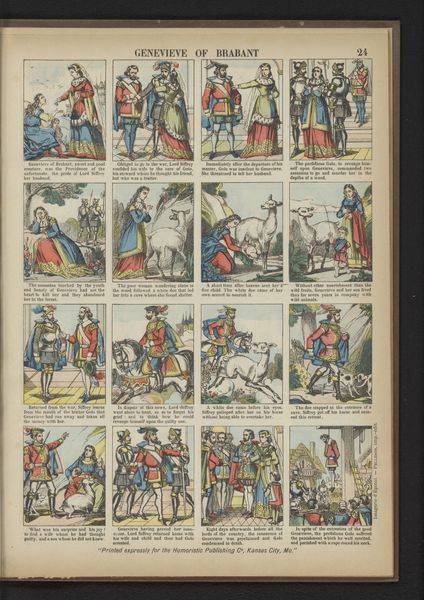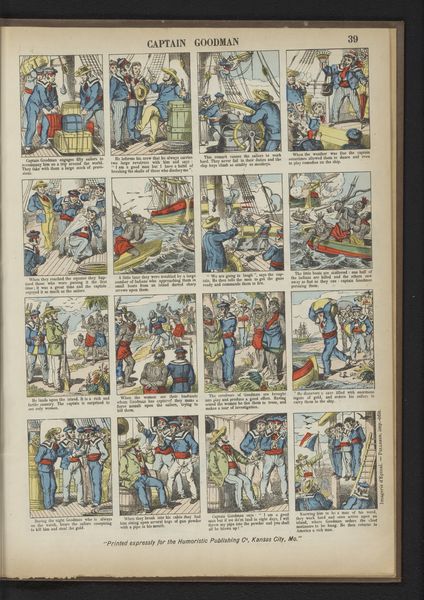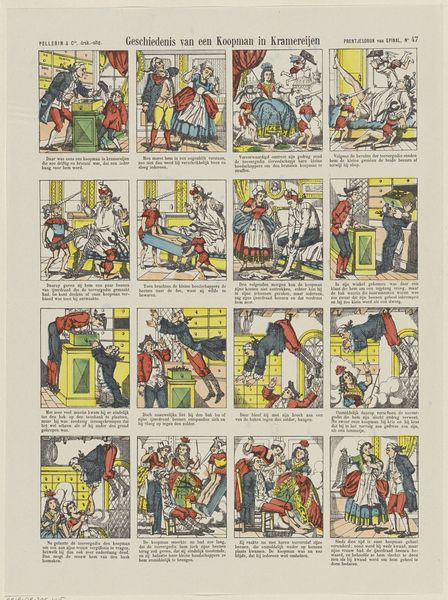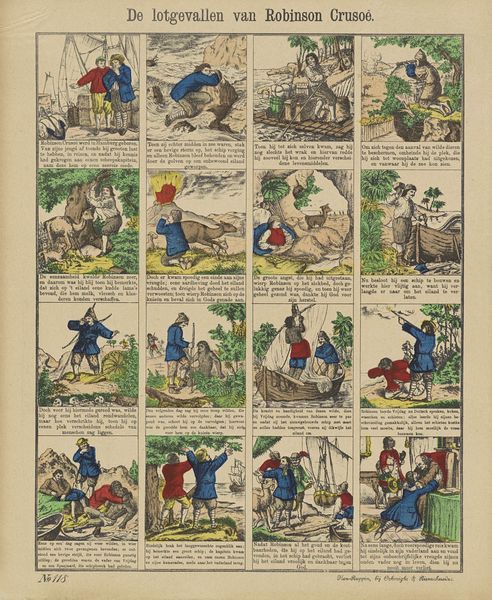
graphic-art, lithograph, print
#
graphic-art
#
narrative-art
#
lithograph
# print
#
comic
#
genre-painting
#
history-painting
Dimensions: height 399 mm, width 295 mm
Copyright: Rijks Museum: Open Domain
Curator: Here we have “Onverzoenbare buren,” or "The Uncomfortable Neighbors,” a lithograph created by Imagerie d'Épinal - Pellerin between 1893 and 1894. What are your first thoughts? Editor: What a chaotic scene! It's like a visual representation of sound. The artist, fiddler, and painter practically vibrate off the page. I'm already bracing for a migraine. Curator: Precisely! Note the strategic employment of panel arrangement and comic-strip framework, in order to depict the step-by-step escalation of an artistic dispute. The initial composition establishes two characters each absorbed in their solitary practice. Editor: They are trapped in their own rhythms, for sure! I’m getting the sense the narrative structure relies heavily on slapstick tropes – the cello as a weapon, the painter's spying antics. Are we meant to see these fellows as allegorical representations of discord? Curator: Arguably yes, with some emphasis. The linear progression signifies a breaking down of neighbourly relations in modernity itself, signified in this era in graphic illustration. Pellerin invites reflection on this rupture through comedic interpretation. Note the attention to form and character interactions that push this point. Editor: True, each expressive figure reinforces the mounting sense of comic mayhem. But there’s also a somber note here, maybe intentional? All this energy, talent, reduced to puerile acts of violence, each creatively seeking revenge to destroy other’s muse. That thought is a little sad. Curator: Indeed, the materiality of the lithograph plays a vital role in creating a vivid, consumable narrative. Aided by advancements in colour printing, its graphic and illustrative aesthetic reflects the historical moment of art’s increasing accessibility and industrial scalability. Editor: A fine point, so it also underscores how easily we can also be "at odds," how much artistic production seems born in constant reaction or defense. This old print captures something still throbbing at a deeper level for artists. Curator: Very well noted. The themes, while humorous, still speak to how conflict resolution remains ever critical between parties whether interpersonal or between artists, past or future. Editor: Right—a creative rivalry packaged in slapstick still delivers lasting implications in the final impression.
Comments
No comments
Be the first to comment and join the conversation on the ultimate creative platform.

